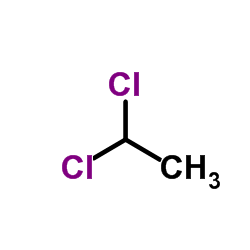Potential for identifying abiotic chloroalkane degradation mechanisms using carbon isotopic fractionation.
Nancy Vanstone, Martin Elsner, Georges Lacrampe-Couloume, Scott Mabury, Barbara Sherwood Lollar
文献索引:Environ. Sci. Technol. 42(1) , 126-32, (2008)
全文:HTML全文
摘要
Degradation of 1,1- and 1,2-dichloroethane (1,1-DCA, 1,2-DCA) and carbon tetrachloride (CCl4) on Zn0 was investigated using compound specific isotope analysis (CSIA) to measure isotopic fractionation factors for chloroalkane degradation by hydrogenolysis, by alpha-elimination, and by beta-elimination. Significant differences in enrichment factors (epsilon) and associated apparent kinetic isotope effects (AKIE) were measured for these different reaction pathways, suggesting that carbon isotope fractionation by beta-elimination is substantially larger than fractionation by hydrogenolysis or by alpha-elimination. Specifically, for 1,1-DCA, the isotopic composition of the reductive alpha-elimination product (ethane) and the hydrogenolysis product (chloroethane) were the same, indicating that cleavage of a single C-Cl bond was the rate-limiting step in both cases. In contrast, for 1,2-DCA, epsilon = epsilon(reactive position) = -29.7 +/- 1.5% per hundred, and the calculated AKIE (1.03) indicated that beta-elimination was likely concerted, possibly involving two C-Cl bonds simultaneously. Compared to 1,1-DCA hydrogenolysis, the AKIE of 1.01 for hydrogenolysis of CCl4 was much lower, indicating that, for this highly reactive organohalide, mass transfer to the surface was likely partially rate-limiting. These findings are a first step toward delineating the relative contribution of these competing pathways in other abiotic systems such as the degradation of chlorinated ethenes on zerovalent iron (ZVI), iron sulfide, pyrite, or magnetite, and, potentially, toward distinguishing between degradation of chlorinated ethenes by abiotic versus biotic processes.
相关化合物
| 结构式 | 名称/CAS号 | 分子式 | 全部文献 |
|---|---|---|---|
 |
1,1-二氯乙烷标准溶液
CAS:75-34-3 |
C2H4Cl2 |
|
Analysis of drugs of abuse in human plasma by dispersive liq...
2015-04-01 [J. Appl. Toxicol. 35(4) , 418-25, (2015)] |
|
Enhanced peripheral nerve regeneration by the combination of...
2013-07-01 [Brain Behav. 3(4) , 417-30, (2014)] |
|
Identification of Dehalobacter reductive dehalogenases that ...
2013-04-19 [Philos. Trans. R. Soc. Lond., B, Biol. Sci. 368(1616) , 20120318, (2013)] |
|
A new analytical method to determine non-steroidal anti-infl...
2014-11-01 [Talanta 129 , 552-9, (2014)] |
|
Efflux by small multidrug resistance proteins is inhibited b...
2015-01-16 [J. Biol. Chem. 290(3) , 1752-9, (2015)] |